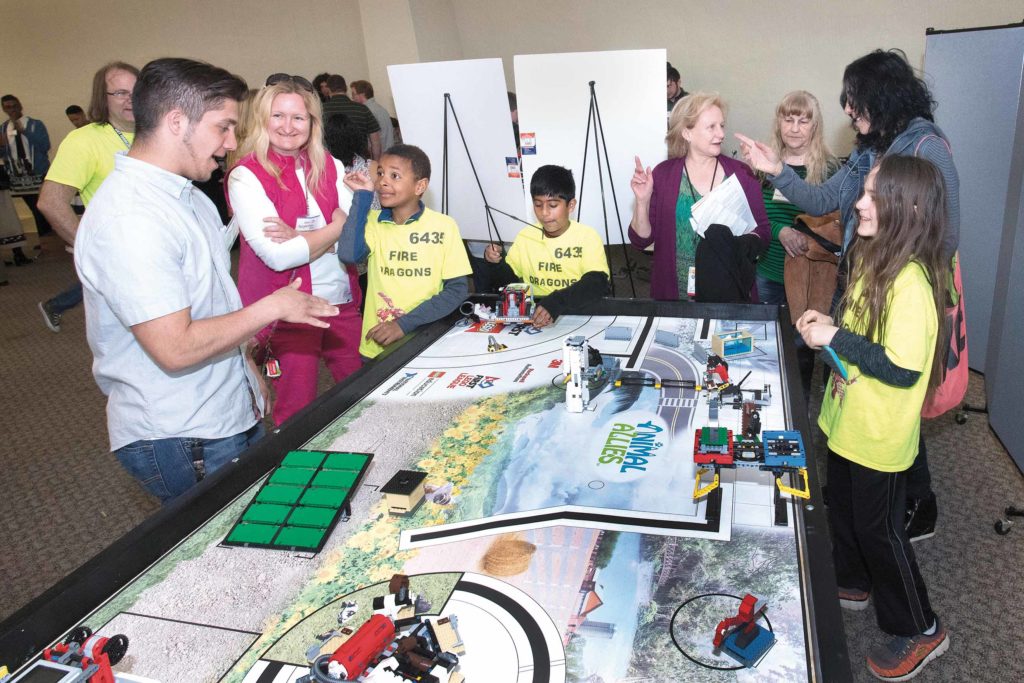LI STEM Hub paves way for future innovators

Chances are, anyone who’s participated in a conversation about education in the last 10-or-so years has come across the acronym “STEM.” Most know it as shorthand for Science, Technology, Engineering and Mathematics, but to the LI STEM Hub, it stands for something much more—namely, the future of education and employment on Long Island.
“When people would talk a few years back, they’d talk about the use of computing, technology and coding,” said Ken White, founding director of Portal to Discovery and manager of the Office of Educational Programs Brookhaven National Labs. “When you go into manufacturing communities, you see that the work is becoming more and more complex. The health care industry has opportunities for youths—as well as engineering, when you look at weather patterns and rising water levels. We’ve coordinated with the Regional Economic Development Council, so we’ve worked very closely to align with growth, opportunity and sustained engagement on Long Island.”
The LI STEM Hub’s goal is to provide enhanced STEM-based opportunities for students and teachers in order to prepare them for their futures in school, at the college level and in the workforce. It does so by creating programs and activities that provide hands-on experience, including robotics projects, ecosystem research projects, emergency service driver training and many others.
In order to provide the most rewarding STEM experience possible, the Hub’s stewards, Brookhaven National Laboratory and North Shore LIJ Health System, are partnered with a multitude of local schools and businesses, including Nassau Boces, Winthrop University Hospital and Farmingdale State College. White, who acts as co-steward of the LI Stem Hub along with Cheryl Davidson, Director Workforce Readiness, North Shore-LIJ Health System, believes that the Hub’s success is predicated on the cooperation of all of these local STEM resources, among other factors.
“It’s multi-pronged,” White said of the Hub’s approach to cultivating STEM education and job opportunities. “There’s getting students interested, because there’s a shortage of that type of worker on Long Island. The other part of it is having teachers know how to teach that content. And thirdly, there’s a family piece, which I think is very important. If a parent doesn’t understand the opportunities [in STEM fields] available for their children, they might push their child in a certain direction.”
According to the Federal Bureau of Labor Statistics, there will be nine million more STEM-related jobs in 2020 than there were in 2012, and the number is only expected to increase over time. White believes that it’s never too early for students to become familiar with challenging and dense scientific concepts, particularly those that encourage creativity and innovative thinking.

“Young people have a tendency to discover things and get excited. It’s like planting a seed and seeing it sprout,” White said. “Especially fourth- to fifth-graders and eighth- to ninth-graders, those are big transition points. They start to think about what they can and can’t do. So we try for programs [that will reach] those age groups. We look to show kids how they can do this and give them a reason to understand science.”
Long Island has consistently been a leading force in the development of STEM, from Grumman’s role in putting a man on the moon, to Brookhaven Lab’s creation of the electronic tennis game “Tennis For Two,” widely considered to be the forefather of video games, if not the very first. With such a rich history to live up to, White is optimistic that the Hub’s initiatives will allow young thinkers to contribute to an ever-evolving field, and do so close to home.
“With Long Island, it’s no secret there’s a high cost of living, and it can be a challenge for young people,” White said, before adding another fact about its residents. “We are real problem solvers on Long Island.”










































